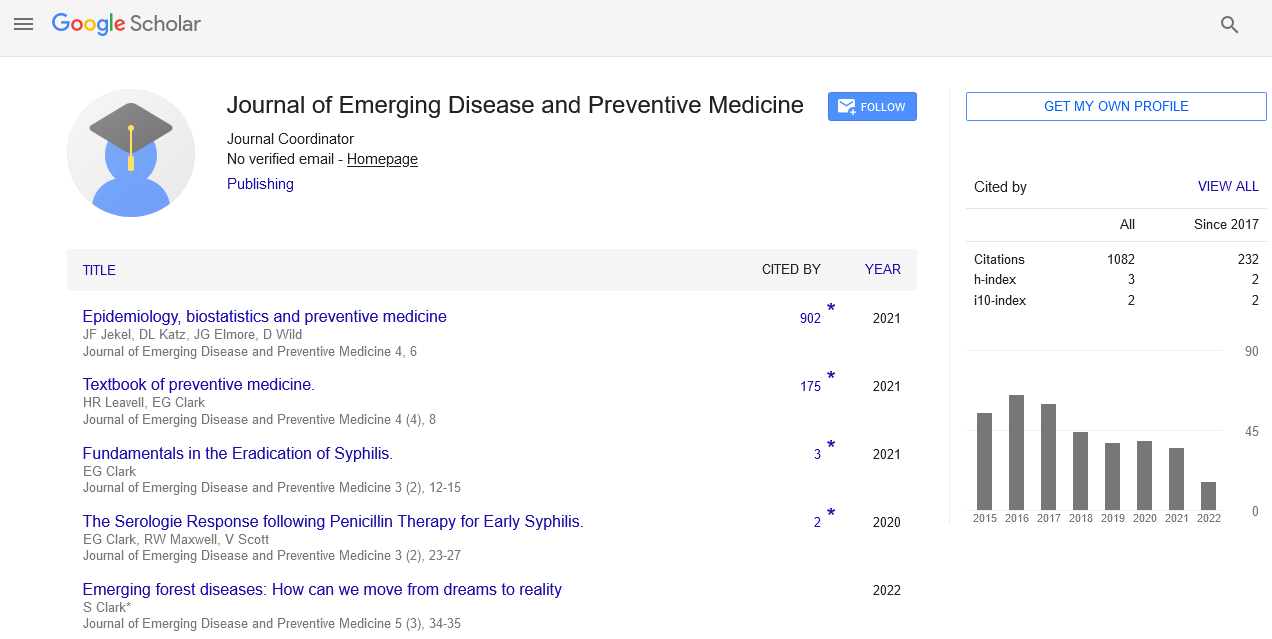An Overview on Lung Cancer
Received: 04-Dec-2021 Accepted Date: Dec 18, 2021; Published: 25-Dec-2021
This open-access article is distributed under the terms of the Creative Commons Attribution Non-Commercial License (CC BY-NC) (http://creativecommons.org/licenses/by-nc/4.0/), which permits reuse, distribution and reproduction of the article, provided that the original work is properly cited and the reuse is restricted to noncommercial purposes. For commercial reuse, contact reprints@pulsus.com
Introduction
Lung cancer is a serious lung disease caused by smoking. It usually has no obvious symptoms until the disease is very advanced and has a low survival rate. Treatment for lung cancer mainly involves surgery and chemotherapy. Radiation therapy and targeted drug treatment may also be used.
The growth of lung cancer is strongly linked to smoking - about 80% of lung cancer is due to tobacco use. Smoking cigars and tobacco can also cause lung cancer, but the risk is not as high as smoking. Cigarette smoke contains more than 4,000 chemical ingredients, many of which cause carcinogens. Smoking, that is, inhaling secondhand smoke from non-smokers, is a significant factor in lung cancer. Although most lung cancers are related to smoking, not all smokers continue to grow. lung cancer and lung cancer can occur in people who have never smoked or have been exposed to secondhand smoke. These observations suggest that genetic predisposition (i.e. a family history of the disease) may play a role in the development of lung cancer.
The stage for lung cancer refers to the extent to which cancer has spread to other parts of the body. The stage helps determine how the cancer should be treated. Although lung cancer can spread to any part of the body, liver, brain, and bones are the most common. The two types of lung cancer are classified differently. Part I: Cancer of the lungs Page II: cancer that is trapped in the chestStage III: cancer that is trapped in the chest but with larger and stronger tumors than stage IIstage VI. : cancer that has spread to other parts of the body. Lung cancer Short stage: cancer is trapped in the chest area Wide stage: cancer has spread to other parts of the body.
Cancer treatment includes a combination of surgery to remove cancer cells, as well as chemotherapy and radiation treatment to kill cancer cells. Lung cancer cannot be cured unless complete surgical removal of tumor cells can be achieved. Surgery is the most effective treatment for lung cancer but is limited to cancers that have not spread beyond the lungs, namely stage I, II, and III NSCLC and others. patients with a limited stage of NSCLC. Radiation therapy, which uses high-energy radiation to kill cancer cells, may be used for both NSCLC and SCLC. The goal is to destroy cancer cells without damaging many normal cells. Radiation therapy is a great option for people who do not qualify for surgery or who refuse surgery. It can also be used after surgery to kill any cancer cells that may be left behind. Chemical agents are used in both NSCLC and SCLC to kill rapidly growing cancer cells. Chemotherapy may be given alone or combined with surgery or radiation therapy. Chemotherapy is the preferred treatment of SCLC as it is most commonly spread throughout the body at diagnosis. Targeted therapeutic drugs usually cause less damage to normal cells than to chemotherapy or radiation. Tyrosine kinase inhibitors are drugs of small molecules that work inside cancer cells to prevent the signals that cancer cells need to grow and divide. growth and progression. Other molecular-oriented therapies are effective only when human cancer cells have a specific genetic mutation. Laboratory testing modifications are available to determine if a molecular target drug will work for a particular person. Immunotherapy drugs use a patient’s immune system to fight its cancer by developing, directing, or restoring the natural antibodies to cancer.





